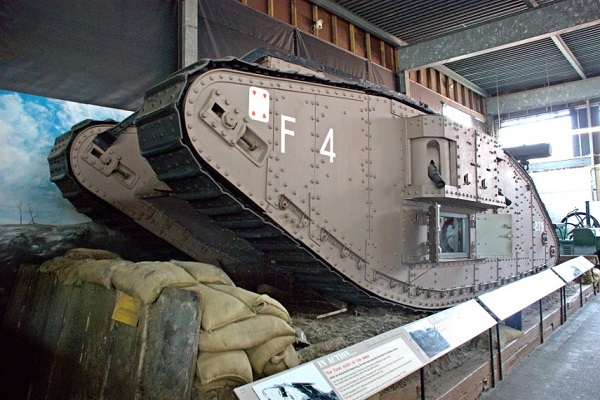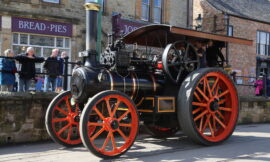The Museum of Lincolnshire Life, located in the historic city of Lincoln, England, offers a fascinating insight into the social, agricultural, industrial, and military history of Lincolnshire. Established in 1969, the museum is housed in a former Victorian barracks and features an extensive collection of artifacts that span the 19th and 20th centuries, reflecting the everyday lives of the people of Lincolnshire. From traditional crafts and trades to military memorabilia and vintage vehicles, the museum provides a comprehensive and engaging exploration of the county’s rich heritage.
The Origins and Development of the Museum
The Museum of Lincolnshire Life was established with the goal of preserving and showcasing the diverse cultural and historical legacy of Lincolnshire. The museum is situated in the Old Barracks on Burton Road, a Victorian complex that was originally built in 1857 to house the Royal North Lincoln Militia. This setting adds an authentic historical atmosphere to the museum, enhancing the visitor experience with its period architecture and original features.
The museum’s establishment was driven by a desire to celebrate the county’s unique identity, which is deeply rooted in agriculture, rural life, and local industries. Over the years, the museum has grown significantly, expanding its collections and exhibits to cover a broad spectrum of Lincolnshire’s past. It now boasts one of the most extensive social history collections in the region, attracting visitors of all ages who are keen to learn about the heritage of this distinctive part of England.
Exhibits and Collections
The Museum of Lincolnshire Life is divided into themed galleries and displays that cover various aspects of the county’s history. Each exhibit is carefully curated to provide a vivid portrayal of life in Lincolnshire over the centuries, with a focus on authenticity and engagement. The museum’s collections include thousands of objects, ranging from domestic items and agricultural tools to military artifacts and industrial machinery.
1. Domestic Life and Social History
One of the main highlights of the museum is its extensive collection of domestic and social history exhibits. These displays offer a glimpse into the everyday lives of Lincolnshire’s residents from the Victorian era through to the mid-20th century. The museum recreates various domestic settings, including a Victorian kitchen, a 1940s living room, and a traditional laundry room, complete with authentic furnishings, appliances, and household items.
These reconstructions provide a tactile and immersive experience, allowing visitors to step back in time and appreciate the challenges and routines of domestic life in the past. The exhibits also explore the evolution of home life, showing how technological advancements and social changes have transformed the way people lived and worked in Lincolnshire over the years.
2. Agricultural Heritage
Agriculture has long been the backbone of Lincolnshire’s economy and culture, and the Museum of Lincolnshire Life pays tribute to this heritage with its extensive agricultural displays. The museum showcases a wide range of farming tools, machinery, and equipment that illustrate the evolution of agricultural practices in the region. From traditional hand tools used in the fields to early mechanized plows and threshing machines, the exhibits highlight the ingenuity and hard work of Lincolnshire’s farming communities.
One of the key features of the agricultural displays is the impressive collection of tractors and vintage farm vehicles, including some of the earliest examples of mechanized farming equipment. The museum also explores the lives of farm workers and rural communities, highlighting the seasonal rhythms of farming life, the impact of technological changes, and the social and economic challenges faced by those who worked the land.
3. Trades and Industries
Lincolnshire has a rich industrial heritage, and the museum provides a detailed look at the trades and industries that have shaped the county’s economy. The exhibits include workshops and displays dedicated to traditional crafts such as blacksmithing, wheelwrighting, and cobbling, which were essential trades in rural and small-town communities.
The museum also delves into Lincolnshire’s industrial history, showcasing the county’s contributions to engineering, manufacturing, and transport. Among the notable exhibits is the story of Ruston & Hornsby, a Lincoln-based engineering company that was one of the largest manufacturers of industrial machinery in the world. The museum displays a variety of Ruston & Hornsby products, including engines, tractors, and other equipment, demonstrating the company’s pivotal role in the industrial development of Lincolnshire.
4. Military History
Reflecting its origins as a military barracks, the Museum of Lincolnshire Life has a strong focus on military history. The museum’s military exhibits cover a range of conflicts and periods, with a particular emphasis on the contributions of Lincolnshire regiments and soldiers. The collection includes uniforms, weapons, medals, and personal items that tell the stories of local men and women who served in the armed forces.
One of the standout features of the military collection is the regimental gallery dedicated to the Royal Lincolnshire Regiment, which served in various conflicts from the 17th century until it was amalgamated into the Royal Anglian Regiment in 1960. The gallery includes detailed displays on the regiment’s history, notable battles, and the everyday life of soldiers, providing a comprehensive look at the military heritage of the county.
The museum also houses a significant piece of military engineering history—the first operational prototype of the tank, known as “Little Willie.” Developed in Lincoln by the engineering company William Foster & Co. during World War I, Little Willie represents a revolutionary moment in military technology and a notable achievement for the city of Lincoln. The tank is displayed alongside information about its development and impact on warfare, highlighting Lincoln’s role in this groundbreaking innovation.
5. Childhood and Education
The museum also explores the themes of childhood and education, with displays that recreate a Victorian schoolroom and showcase toys, games, and educational materials from different periods. These exhibits provide an engaging and nostalgic look at the experiences of children growing up in Lincolnshire, from school lessons and playground activities to family life and holidays.
The recreated schoolroom features authentic desks, blackboards, and teaching aids, offering visitors a chance to experience the atmosphere of a 19th-century classroom. The exhibits on childhood include a variety of toys and games, from simple wooden dolls and tin soldiers to early board games and puzzles, illustrating the changing nature of play and leisure over the decades.
Community Engagement and Educational Programs
The Museum of Lincolnshire Life is not just a place to view exhibits; it is also a dynamic community resource that offers a wide range of educational programs, workshops, and events. The museum actively engages with schools, families, and community groups, providing opportunities for hands-on learning and exploration. Educational visits to the museum are designed to complement the school curriculum, with interactive activities that bring history to life for students of all ages.
The museum’s outreach programs extend beyond its walls, with projects that involve local communities in preserving and sharing their own heritage. These initiatives include oral history projects, community exhibitions, and collaborative events that celebrate Lincolnshire’s diverse cultural traditions.
The museum also hosts a variety of events throughout the year, from historical reenactments and craft demonstrations to seasonal celebrations and family fun days. These events provide an opportunity for visitors to experience history in a lively and engaging way, often with the chance to participate in activities such as traditional crafts, vintage games, and historical role-playing.
Preserving Lincolnshire’s Heritage
The Museum of Lincolnshire Life plays a crucial role in preserving the heritage of Lincolnshire, ensuring that the stories, artifacts, and traditions of the county are not forgotten. The museum’s collections are meticulously cared for by a team of dedicated staff and volunteers, who work to maintain the integrity and accessibility of the exhibits. Conservation efforts are ongoing, with a focus on preserving the diverse range of objects in the museum’s care, from fragile textiles and paper documents to large machinery and vehicles.
In addition to its physical exhibits, the museum is also committed to digital preservation and outreach, using technology to make its collections accessible to a wider audience. Online resources, virtual tours, and digital archives allow people to explore Lincolnshire’s history from anywhere in the world, expanding the museum’s reach and impact.
Conclusion
The Museum of Lincolnshire Life is a treasure trove of history that offers a comprehensive and engaging look at the heritage of Lincolnshire. Through its diverse collections, immersive exhibits, and active community programs, the museum brings the past to life, allowing visitors to explore the rich and varied stories of the people who have shaped this unique county. From the everyday lives of Victorian households to the pioneering innovations of Lincoln’s industrial giants, the museum provides a window into the past that is both informative and inspiring.
As a custodian of Lincolnshire’s history, the Museum of Lincolnshire Life plays a vital role in preserving the county’s cultural legacy and sharing it with future generations. Its commitment to education, community engagement, and the celebration of local traditions ensures that the heritage of Lincolnshire remains alive and accessible, making it a valuable and beloved institution for residents and visitors alike.



